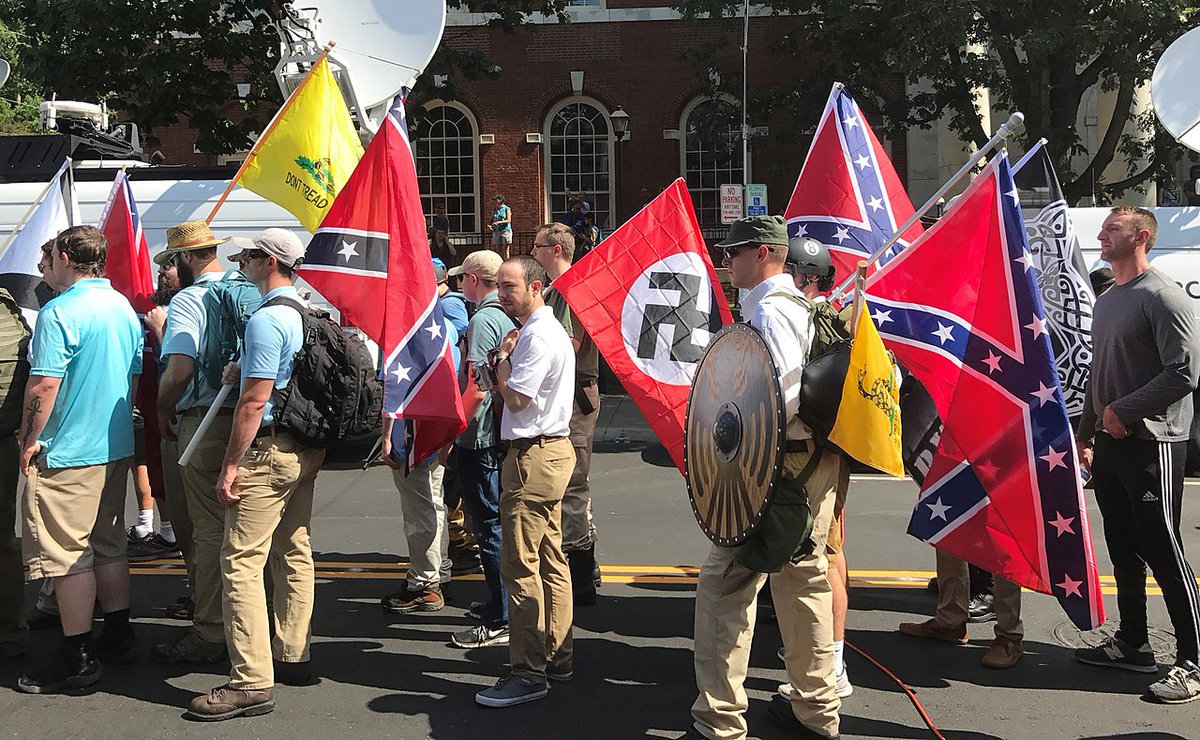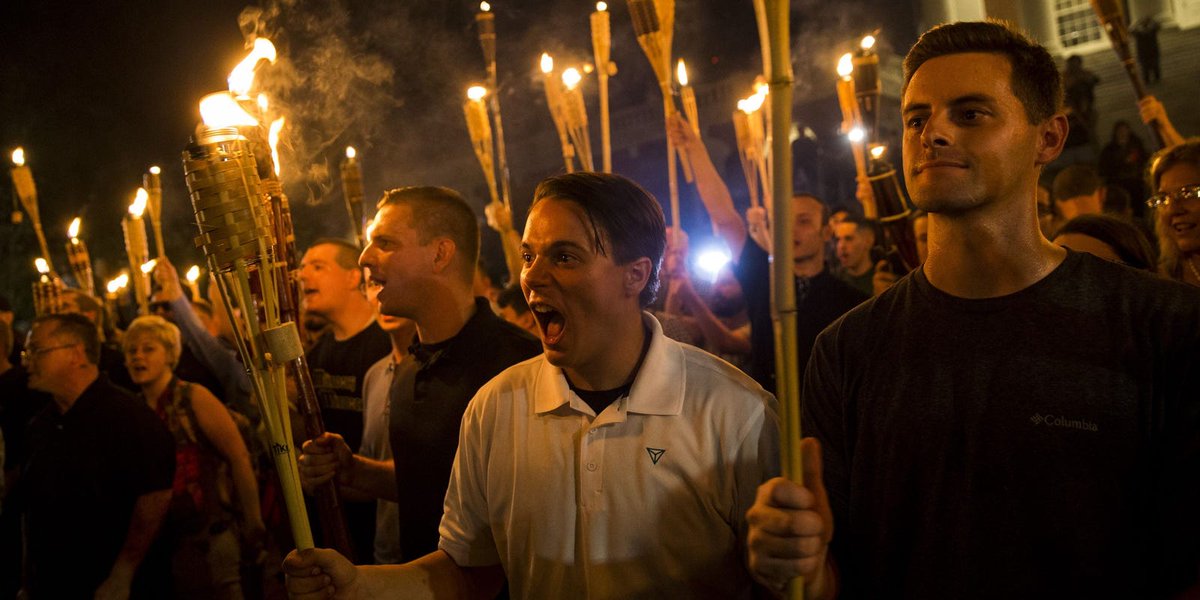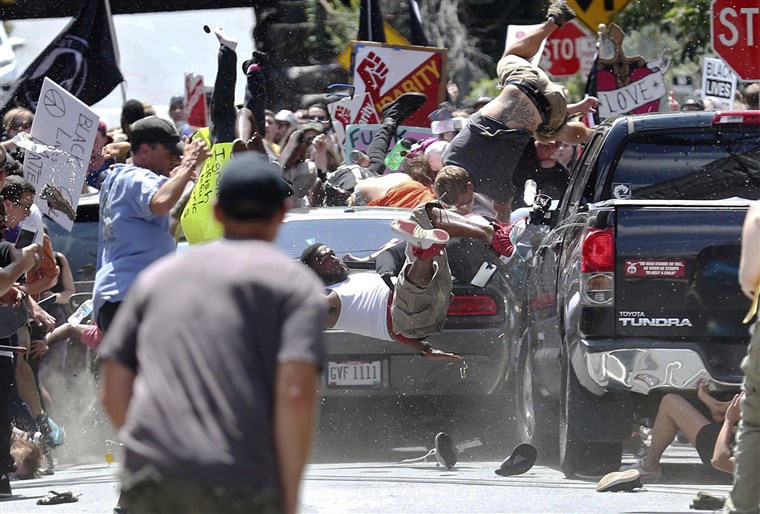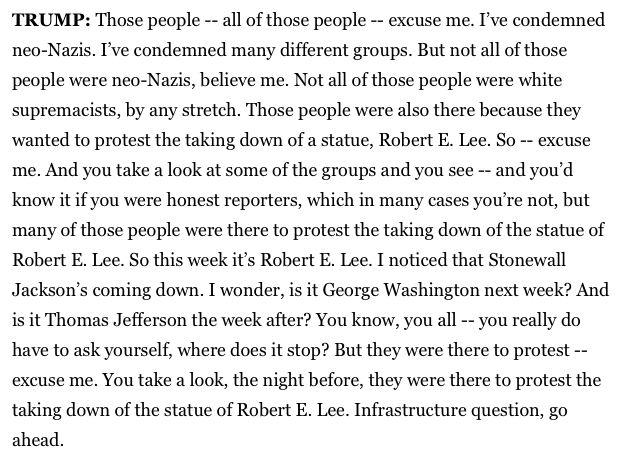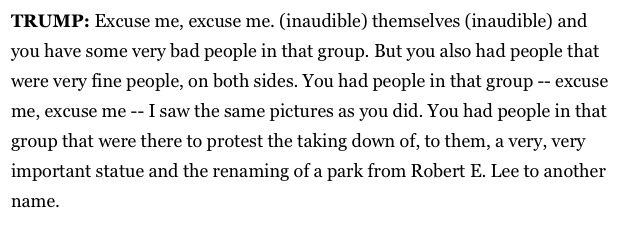1. I see this has come up again, so let& #39;s take a moment analyze the nature of the Charlottesville rally (in August 2017) and what President Trump said in response.
2. The Charlottesville incident arose from a two-day protest called "Unite the Right", organized by leading figures on the far right, including Richard Spencer, to demonstrate against the removal of a statue of Confederate General Robert E. Lee.
3. The event attracted many participants from Neo-Nazi and Neo-Confederate groups, as well as counterprotesters, some of them peaceful, others associated with Antifa. Concerned about the prospect of violence, the Governor declared a state of emergency.
4. Clearly not all people who question or disagree with the removal of Confederate monuments qualify as Far Right extremists. But this particular event was organized by the Far Right, and it would have been evident to anyone who attended or participated.
5. The first evening of the event featured a torchlit parade through the university campus, with participants chanting "Jews will not replace us".
6. The next day saw more confrontations between participants and counter-protestors. Who was at fault? Maybe both were. But the scuffles aren& #39;t why that day sticks in our minds.
7. What stood out, then and now, was that a far-right participant got in his car and intentionally rammed a crowd of counter-protestors, killing one person.
8. At a press conference, President Trump was asked his response to the incident. He gave rambling remarks which anyone can watch or read in detail online. https://www.latimes.com/politics/la-na-pol-trump-charlottesville-transcript-20170815-story.html">https://www.latimes.com/politics/...
9. He began by saying "we condemn in the strongest possible terms this egregious display of hatred, bigotry and violence. It has no place in America" and "I think the driver of the car is a disgrace to himself, his family and his country." So far, so good.
10. But he kept alluding to the notion that "there are still things that people don’t know" and asked "What about the alt-left that came charging at the -- as you say, the alt-right? Do they have any semblance of guilt?"
11. Now certainly many of the confrontations that took place that day took two to tango. But at the end of the day, the far-right groups organized the event, and one of their number killed someone, on purpose.
12. Pressed, President Trump emphasized that he saw the two groups are morally equivalent and equally culpable.
14. "But not all of those people were neo-Nazis, believe me. Not all of those people were white supremacists, by any stretch." BUT THEY WERE. That was precisely the nature of the Unite the Right demonstration.
15. The Neo-Nazis had hijacked an issue to capitalize on it. If someone happened to disagree with removing the Robert E. Lee statue, and showed up to that event and saw swastikas flying and armed militia members, they would have quickly figured that out.
16. But Trump insisted this was not the case. He said, "you have some very bad people in that group. But you also had people that were very fine people, on both sides."
17. What Trump is claiming is that there were peaceful and extreme/violent protesters on both sides. And in particular, that there were plenty of decent folks out there protesting the removal of the statue, as distinct from the Neo-Nazis.
18. To support this interpretation, some Trump supporters have drawn a distinction between the torchlit Neo-Nazi rally the night before, with its obviously appalling scenes, and the daylight demonstration the next day. The first, bad, the second, some very fine people too.
19. This is false. Both demonstrations were part of a single Unite the Right event, organized by far-right fringe groups and featuring extremist imagery. There were no imaginary "very fine people" participating.
20. And, I& #39;ll emphasize again, only person who ended up dead that day was killed by one of those participants.
21. So how should a leader respond to such an event. With moral clarity, and perhaps some moral self-searching. Trump& #39;s very first remarks illustrated the first, if not the second.
22. BUT THEN HE CIRCLED BACK, and watered down that clarity. He spread the blame around. He painted a false picture that there were "very fine people" along with some bad apples among the far-right protesters.
23. Very fine people don& #39;t show up to Nazi-organized rallies, even if they happen to agree with their particular agenda item that day. They don& #39;t stick around when people shout "Jews will not replace us" and unfurl swastikas.
24. And by refusing to recognize this, President Trump normalized these Nazis, despite his original statement supposedly condemning them. He made excuses for them, and pretended not all of them were worthy of blame.
25. He spoke with - at the very least - moral ambivalence at a moment of moral clarity. He hemmed and he hawed. He waffled. Yes, he waffled when no decent person, much less an American President, should waffle.
26. Go ahead and, as Trump likes to say, read the transcript. Parse his words into small enough pieces, and cite them in isolate, so you can pretend not to see that he was waffling and trying to have it both ways.
27. But as I& #39;ve said before, think about how people talk when they want to be understood. And think about how they talk when they want to talk around a subject: https://twitter.com/prchovanec/status/1108784868190769152?s=20">https://twitter.com/prchovane...
28. Think about the message you take away when someone hedges at a critical moment, when everyone is expecting to hear a clear commitment. https://twitter.com/prchovanec/status/1108788860023132161?s=20">https://twitter.com/prchovane...
29. And think about why people do this. https://twitter.com/prchovanec/status/1108790941987622913?s=20">https://twitter.com/prchovane...

 Read on Twitter
Read on Twitter